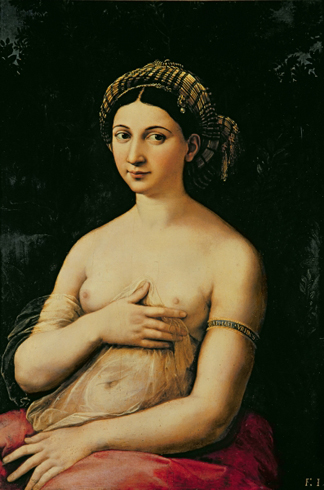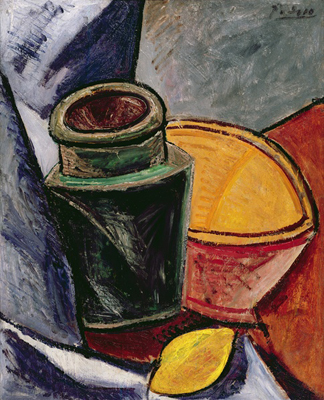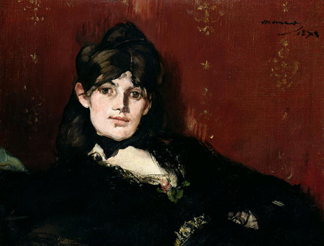Published 14/07/2011

Renaissance Men Behaving Badly Renaissance men, known for their insatiable appetites for knowledge, also struggled with overblown egos and wandering eyes. Days after Michelangelo’s Pieta was placed in Saint Peter's, rumors surged that the work was by Christoforo Solari, a sculptor from Lombard. Enraged, Michelangelo chiseled the inscription MICHEL ANGELUS BONAROTUS FLORENT FACIBAT (Michelangelo Buonarroti, Florentine, made this). The topic of secret lives is tailor-made for Caravaggio, whose life was every bit as dramatic as his paintings. The artist lived 39 dramatic years of assasination attempts, knife-fights, and rumored homosexuality topped off with a mysterious death. The archetype of the 'Renaissance Man,' Leonardo Da Vinci was not immune to accusations of salacious conduct. When the artist was 24, da Vinci was charged with homosexual interaction with a notorious prostitute, Jacopo Saltarelli. The charges were later dropped due to lack of witnesses and evidence. The subject of Caravaggio's and da Vinci's sexuality is still a topic of debate among art historians. The golden boy of the Medici family, Raphael was engaged to Maria Bibbiena, the niece of Cardinal Medici, but she was not the artist's choice. Raphael was said to have many lovers but his favorite was Margherita Luti, the subject of his painting, La Fornarina (right). His wandering even killed him, as Vasari states that Raphael's death was caused by an acute illness after a night of sexual encounters with Luti. |
|
| Clash of the Titans A domineering Gauguin and an insecure van Gogh had a volatile friendship, despite living and working together in Arles. Gauguin claimed that after Van Gogh attacked him with a razor the artist then mutilated his own ear. In shock Gauguin left Arles and went to Paris, after which he would never see van Gogh again. While this version of the story has been accepted for over 100 years, Art Historians Hans Kaufmann and Rita Wildegans claim that after examining police records it appears that it was Gauguin who mutilated Van Gogh's ear with a sword (Guardian, 2009). The fathers of modern art, Matisse and Picasso were both villified by critics in the early 1900s. In 1907, mutual friend Gertrude Stein explains that each painter selected the work he considered to be the worst of the other’s new material. Picasso chose a portrait of Matisse's daughter Marguerite and Matisse chose a still life, Pitcher, Bowl and Lemon (right). Legend has it that Picasso hung his rival's painting in a room where he and his friends threw fake darts at it. Matisse evidently selected Picasso’s painting as a joke, because Matisse had been criticized in the press for his lemons. “Lemons are not flat, Monsieur Matisse,” a critic had written. Picasso’s lemon was even flatter than his own, a fact Matisse found comical. |
Love Bites Artists were not immune to the trials and tribulations of life and love, and many seemed to have a constant cloud of tragedy and strife above their heads. Van Gogh, who never seemed to have any luck with women, once took in a pregnant prostitute named Sien Hoornik along with her younger sister and mother. Sien modeled for van Gogh in exchange for his hospitality. After announcing his intentions to marry her, the artist’s family threatened to turn their backs on him financially. Sien and van Gogh's relationship would end mutually several years later. The drawing Sorrow (left) from April 1882, is one of many works of Sien. Fanatics of Rembrandt often say that many of his works convey a dark tone which perhaps reflects the tragedy and loneliness that plagued the artist’s life. Between 1635 and 1641 Rembrandt and his wife Saskia had four children, but only the last, Titus, survived. A year later Saskia died at the age of thirty. The artist hoping to find love again began a relationship with his housekeeper Hendrickje Stoffels, which he sustained until 1663 when Hendrickje died. Rembrandt was 63 when Titus died in 1668 at only 27 years of age. |
|
| As a young artist in his early twenties, Manet began an affair with his Dutch piano teacher, Suzanne Leenhoff. The affair resulted in a boy, Leon, who was passed off to Suzanne's family and was introduced to society as Suzanne's younger brother and Manet's godson. After the death of his father, and almost 10 years after they began their affair, Manet married Suzanne in order to legitimize their relationship. It is unclear whether Leon ever learned of his true parentage. There is also speculation that Manet's relationship with fellow Impressionist, Berthe Morisot, was more than just reciprocal artistic mentoring. Rumors abound that the two shared romantic feelings but that a true partnership was impossible because of Manet's marriage to Suzanne. In the end, Morisot married Manet’s brother Eugène in 1874. |
Napoleon Complexes French artist Gustave Courbet received much criticism for his work Les Baigneuses (The Bathers). The Bathers was viewed a clear rejection of the academic nude tradition because it showed women in all of their voluptuousness and shied away from nothing. Middle class Salon viewers were so disgusted by the work they often turned away in horror. The police commissioner tried unsuccessfully to drive it out of the exhibition as 'injuring proprieties.' Rumor has it that Napoleon III was so incensed by Courbet's masterpiece that he struck the canvas with his riding crop. Jacques Louis David was as passionate about politics as he was about art; in the early years of the French revolution he voted for the death of Louis XVI and joined the extremist Jacobin group led by Robespierre. The power he gained in the art world through politics gained him the nickname “Robespierre of the brush.” After Robespierre was overthrown and Napoleon Bonaparte came to power David abandoned politics but not without first being arrested twice. The artist met Napoleon in 1797 after Napoleon agreed to sit for a portrait. Captivated by the Emperor, David became his avid supporter and painted many portraits of his new hero and family. |
|







